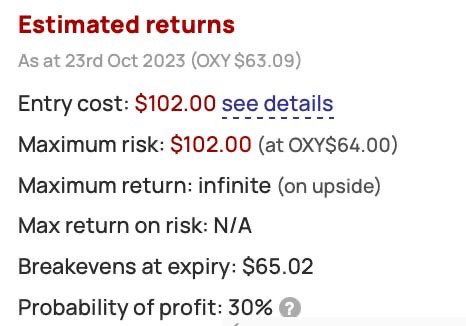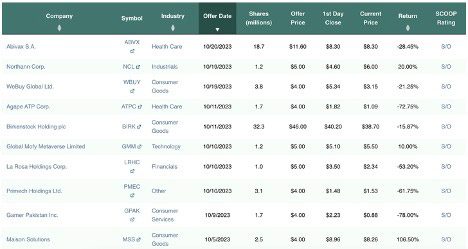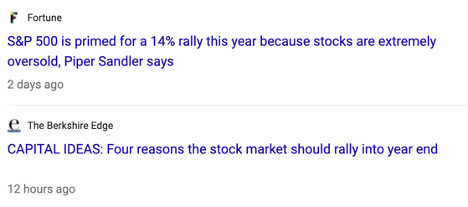

Some people just don't like money.
You probably know these people.
They get a paycheck and install a waterfall for an above-ground pool...

Or they'll take an all-expenses trip to Lake Okeechobee. (Who knew the Red Roof Inn had a Presidential Suite?)
People can do what they want... but we'd advise that people pump the brakes on reckless spending and mindless speculation. That's especially true in today's equity markets, which are experiencing a paradigm shift with the 10-year bond above 5% and the era of cheap money coming to a close.
I want to offer you three things to avoid in the markets today, in 2024, and beyond.
That is... unless you are actively trying to lose money.
Losing Strategy No. 1: Low Probability Call and Put Options
Traders learning options for the first time are easily tempted to test out-of-the-money calls and puts early and often.
If a stock trades at $63.20 per share, traders can make a lot of money if they own a $64.00 call (for $1.00)... and shares explode to $70.00 when the option contract expires. That would mean the $64 call would cost $6.00 at expiration.
But what - based on the 30-day implied volatility - are the odds of these returns?
It's essential to understand the "probability of profit" when doing any trading.
The probability of profit in options trading estimates the likelihood of profit on a specific options trade.
The PoP factors in market conditions and potential price movements.
It helps traders assess the risk-reward ratio and make informed decisions.
Take a look at this options chain for November 3, 2023 expiration.

This is the options chain for Occidental Petroleum (OXY), a company we've discussed in recent months. The first call option that is out of the money (the stock is trading at just above $63.00) is the $64 call.
This morning, the Probability of Profit that the $64.00 call turns a profit at expiration was 30%. Sure, the stock might rise and fall before expiration, and traders could turn a profit. But the numbers tell us that the odds of success are 3 in 10.

Those aren't great odds.
Now, let's expand this story. Traders aren't going to make just one trade.
They'll make LOTS of trades.
And what are the odds that three - just three trades with similar odds all end up turning a profit by expiration?
It's not 50%.
It's 0.3 times 0.3 times 0.3. (30%^3)
That's just 2.7%.
There are ways to improve your probability of options trading, but speculating wildly on out-of-the-money calls is not sustainable. The odds of the $67 call for next Friday finishing in the money are just 13%.
You're better off gambling on the World Series.
Losing Strategy No. 2: Go Heavy into IPOs
An IPO is the first time a private company offers shares of stock to the public (or a company returns to the public markets after being away for some period).
You'll hear a lot about "hot" IPOs. Banks don't even need to hype them. The underwriters can rely on the noise from CNBC, Fox Business Network, CNN Money, Barron's, or the Wall Street Journal. Most of the time, no one even bothers to see if the company is profitable... what it produces... or if the valuations are insane.
The media will propose IPOs as a chance for investors to join on the ground floor. But they fail to remind investors that every public offering is someone else's exit... notably founders, angel investors, and other private investors who were buying shares through Round offerings or on private markets.
This is all about banks earning commissions. The reality is that you'll likely end up on the losing end. How do you know which IPOs will lead to big gains and which will lead to you taking a big hit? The truth is... you do not.
Here's a list of the last 10 IPOs. You'll notice three winners and seven losers. I'm still wondering what Gamer Pakistan (GPAK) is... and why anyone would buy it.

It's best to play the waiting game to see how the stock stabilizes over a year or two. In addition, you're better off buying stocks with real earnings growth and real profits.
Today's IPO world is chock full of unprofitable names where early investors are trying to sell the bag to retail investors - all while hyping weak businesses heading into what looks like a recession.
Losing Strategy No. 3: Ignore Equity Strength Signals
Finally, look at the latest string of bullish calls in the market.
The hype is building.

It's easy to tempt fate and follow the headlines.
But our Equity Strength Signals have been bearish since August as interest rates continue to rise and more funds head for the exits. We follow the signal... and get out of the way when the red reading comes.
This chart shows the signal since January 2022.
It's an absolute rollercoaster... and retail traders are taking for a ride of emotions.

You should notice that the S&P 500 is never at the absolute peak or bottom when our signal turns negative or positive, respectively... It usually comes a few days or a week later (the selling typically occurs when the MACD turns negative, and we see large amounts of "quantitative selling" on the end of the bell curves).
If you want to rebalance or jump back into the market, wait for the Green Light.
As I've said, when this goes negative, we don't know the core reason for the selling until a week or two after the cascading has begun. Our signals have avoided steep declines in the last year and signaled big rallies (on the back of China's central bank injections in January 2023 and June 2023).
It's essential to steer clear of negative signals - as we've seen dramatic declines happen... from the December 2018 selloff to the COVID collapse of February 2020... from the hedge fund dump of June 2022 to the refinancing crisis that started in August.
Be patient, take advantage of emerging income opportunities, and maintain a long-term focus on the equity markets. There are plenty of good times ahead.

Garrett Baldwin


